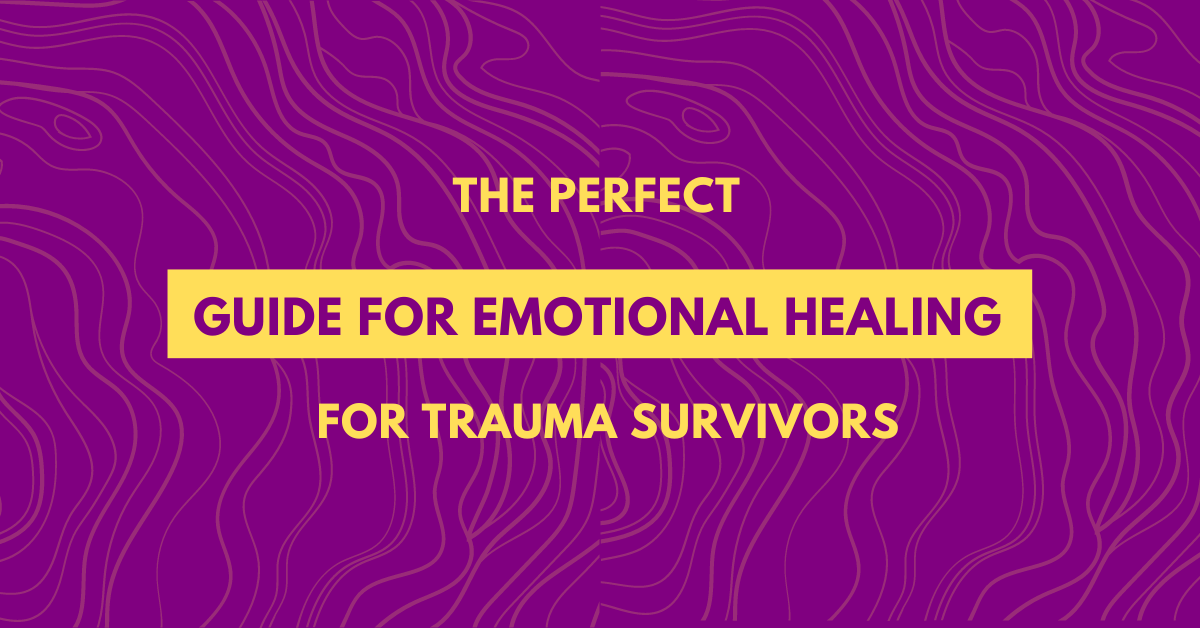 Many of us struggle with emotional wounds, feeling trapped in a cycle of pain and uncertainty. We get stuck wondering things like, “Why can’t I move past this?” or “How can I heal from emotional trauma?” When you’re unsure of what to do, it’s hard to move forward. The good news is, you can find strength in vulnerability by embracing emotional healing. In this post, I’ll define emotional healing and provide 3 key components for achieving it. I hope that this will give you a roadmap so you can start your journey towards emotional wellness and discover the power of your own vulnerability.
Many of us struggle with emotional wounds, feeling trapped in a cycle of pain and uncertainty. We get stuck wondering things like, “Why can’t I move past this?” or “How can I heal from emotional trauma?” When you’re unsure of what to do, it’s hard to move forward. The good news is, you can find strength in vulnerability by embracing emotional healing. In this post, I’ll define emotional healing and provide 3 key components for achieving it. I hope that this will give you a roadmap so you can start your journey towards emotional wellness and discover the power of your own vulnerability.
What is the perfect approach to emotional healing?
Emotional healing is the process of acknowledging, facing, and working through emotional pain and trauma to achieve mental and emotional well-being.
In other words:
It’s about transforming your emotional wounds into sources of strength and resilience. The added benefit is that it leads to a more authentic and fulfilling life.
Acknowledging Your Emotions
Acknowledging your emotions means accepting and understanding your feelings without judgment.
This is a crucial component because it allows you to begin the healing process. Many people who are new to emotional healing start out by suppressing their emotions but then get stuck because they don’t realize that acceptance is the first step.
And then they wind up feeling overwhelmed and disconnected.
The key to starting your healing journey is to allow yourself to feel.
To get started here, try journaling your thoughts and feelings regularly.
 Seeking Support
Seeking Support
Seeking support involves reaching out to friends, family, or professionals for understanding, guidance, and empathy.
If you’ve spent a long time trying to cope alone but something still feels off – like you’re not progressing or finding peace, this is likely the piece that’s missing.
Without this, you can try to heal alone and still not find the healing you seek.
What can you do?
A really useful tool for initiating healing is therapy or support groups.
Explore these options and find a safe space where you can share your feelings and experiences.
 Practicing Self-Compassion
Practicing Self-Compassion
Practicing self-compassion means treating yourself with the same kindness and understanding that you would offer a good friend.
Here’s where you’ll really start to embrace your vulnerabilities and transform them into strengths.
Of course, this will take some time and effort. Consider integrating mindfulness or meditation into your routine.
The approach you can use to cultivate self-compassion is:
Start by acknowledging your pain and suffering.
Then, remind yourself that you are not alone in your struggles.
Then, in order to foster a nurturing attitude towards yourself, practice positive self-talk and self-care.
Once you’re done, you’ll be well on your way to a more compassionate and healing relationship with yourself.
Putting it All Together for Your Perfect Emotional Healing
There you have it! The 3 components of your perfect emotional healing journey.
It may sound like a lot, but like most things, practice makes perfect. Just focus on taking one step at a time. This will help you navigate your emotions more effectively and foster greater resilience and self-awareness.
What’s next? Download “The Emotional Healing Workbook.” If you need help getting started, my “Emotional Healing Workbook” will help you navigate through your emotional journey so you can embrace your vulnerabilities and find strength in them.





Leave a Reply